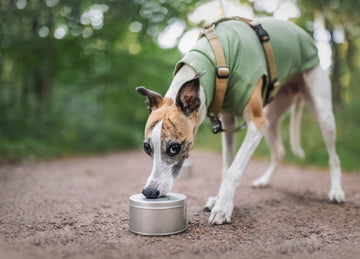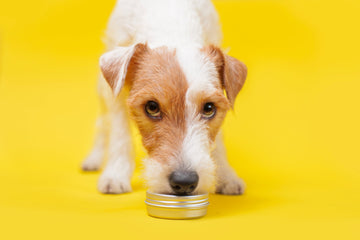
Nosework Imprinting
Now that you know what organization you want to compete under, have read their rules, and purchased some vessels and pre-scented cotton swabs it’s time to begin the rewarding journey into nose work! If you haven’t purchased your materials or a starter kit yet, check out our selection.
In this post, we will cover:
- What is imprinting?
- How to imprint.
A dog’s nose is one amazing part of anatomy. Their keen sense of smell due to the millions of olfactory receptors in their snoot. As a point of reference, humans only have about five million versus the 300 million that dogs possess [1]. Even though we have only begun to tap into the potential when it comes to dogs and their noses, they do not come pre-programed to find the odor we want to search for.
What is Imprinting?
Imprinting is a process where you show your dog that a particular odor has value or that odor “pays”. Once an odor is imprinted, then you can begin to have your dog search for that odor.
How to Imprint
As with so many other parts of dog training, there are multiple ways to imprint your dog to an odor. In this article we will over two ways you can imprint your dog.
Shaping
This method requires a dog that can be shaped into behavior. If you have done mostly luring with your dog in the past or aren’t sure what shaping is, check out our post about the differences between shaping and luring.
You will need a glass jar, a vessel, and pre-scented cotton swabs. Put the cotton swab in a vessel (to avoid contamination) and then place that vessel into a glass jar. The dog should not be able to reach the vessel even if they stick their nose in the glass jar.
In an area with low distraction (a sterile environment/ ”aquarium”) you will hold the jar and shape the dog to stick it’s nose into the jar. Eventually building duration so that they are smelling the odor before being marked. The goal is to try and mark obvious sniffing behavior but having their nose in the jar is acceptable as well.
Association
If your dog isn’t good at shaping, or you don’t know what shaping is, this method will be more up your alley. In this method we use the pairing of food with odor to imprint the dog. It is more a direct style of rewarding where shaping is an indirect method of rewarding.
For this method you will need a scent vessel, pre-scented cotton swab, and your dog’s favorite treat. Like the shaping method, you will place the cotton swab in the vessel. In an area with low distraction, you will place the vessel and their favorite food next to each other in the center of the area. Allow your dog to go the vessel and eat the food. If your dog already knows how to search for food that you hide, you will begin placing the odor with the hidden food. Otherwise, you will start to have the dog watch you hide the food/odor and then release them to get the food.
With both methods you don’t want to show them what to do or where the odor is. In nosework, a dog needs to be able to work independently from the handler. A dog that thinks you know where the odor is will look to you for help and guidance, which you will be unable to give during competition.
As you move forward in your nosework training, remember that the key is patience. Allow your dog the time they need to become comfortable with the process and learn to trust their own instincts. The joy of watching your dog work independently is a testament to both their abilities and the solid foundation of training you’ve built together.
Now that your dog is working independently, it’s time to take the next step in their nosework training. Whether you’re working toward competition or simply honing your dog’s natural instincts, continuous training and practice are key. Stay tuned for the next part of our series where we will explore more advanced nosework techniques and how to further challenge your dog’s scent detection skills.
At Pawsome DogSports, we are here to guide you every step of the way as you and your dog develop the skills needed for successful scent work. Keep training, stay consistent, and most importantly—have fun!
References:
[1] Medical Detection Dogs, Medical Detection Dogs website, Anatomy of a Dog’s Nose, accessed 3/18/24, < https://www.medicaldetectiondogs.org.uk/anatomy-of-thedogsnose/#:~:text=The%20Muzzle%20of%20the%20dog,HAS%20UP%20TO%20300%20MILLION.&text=This%20is%20possible%20because%20the,all%20lined%20by%20an%20epithelium>



